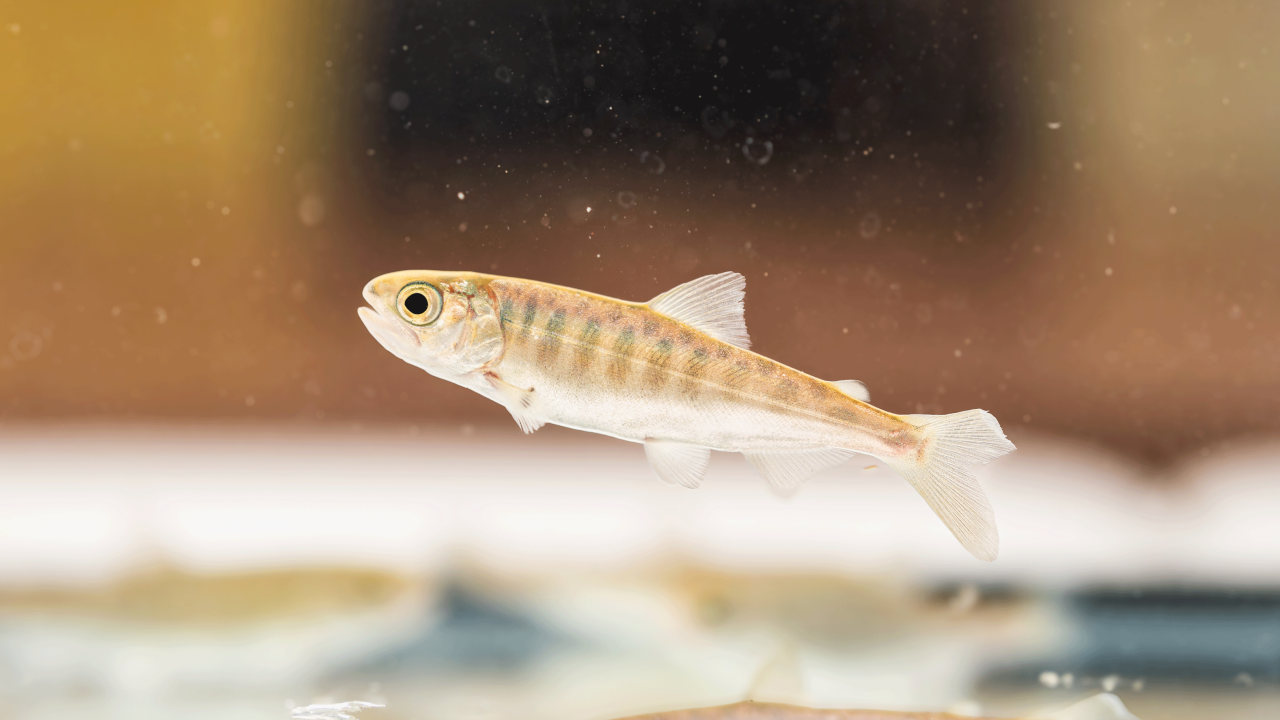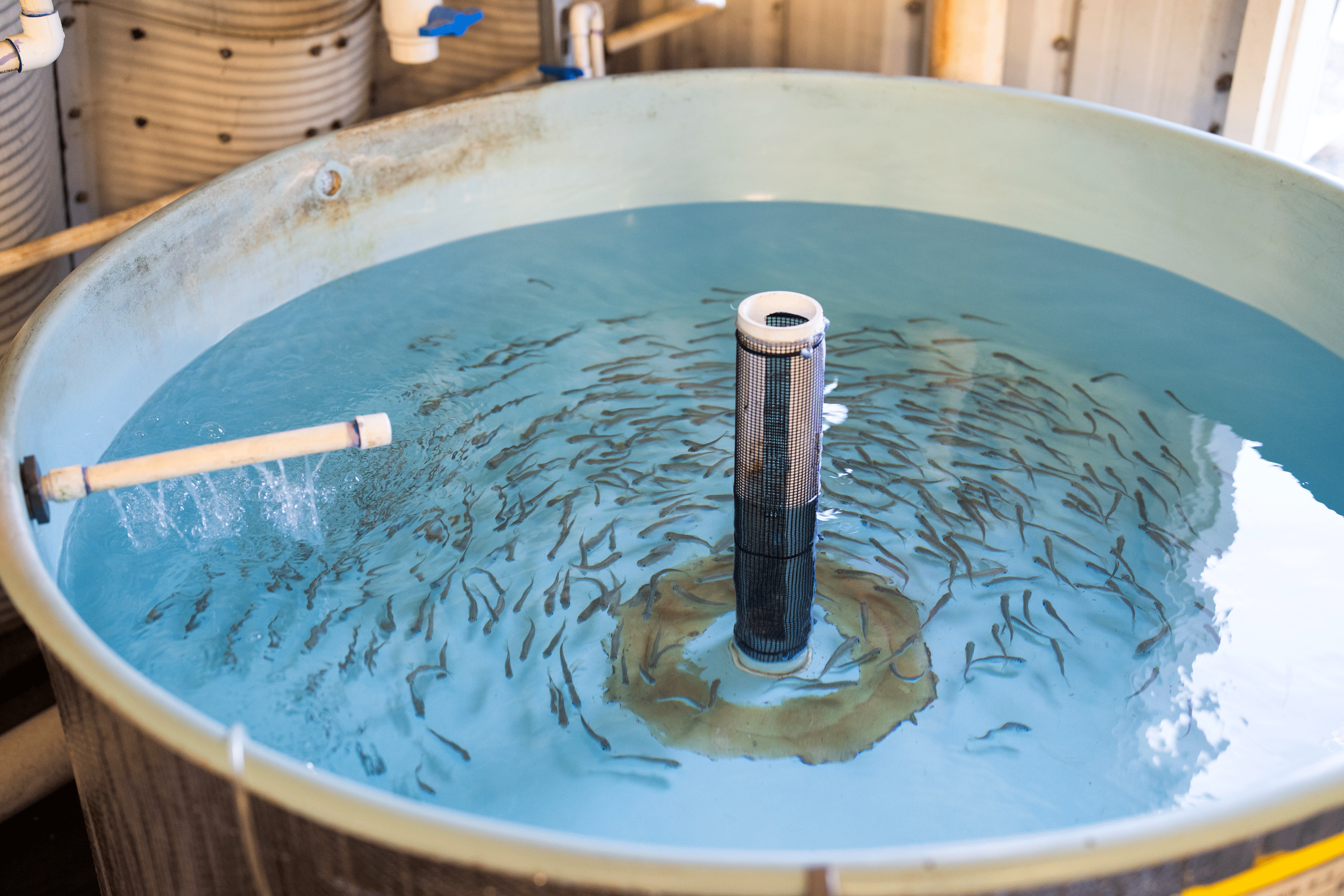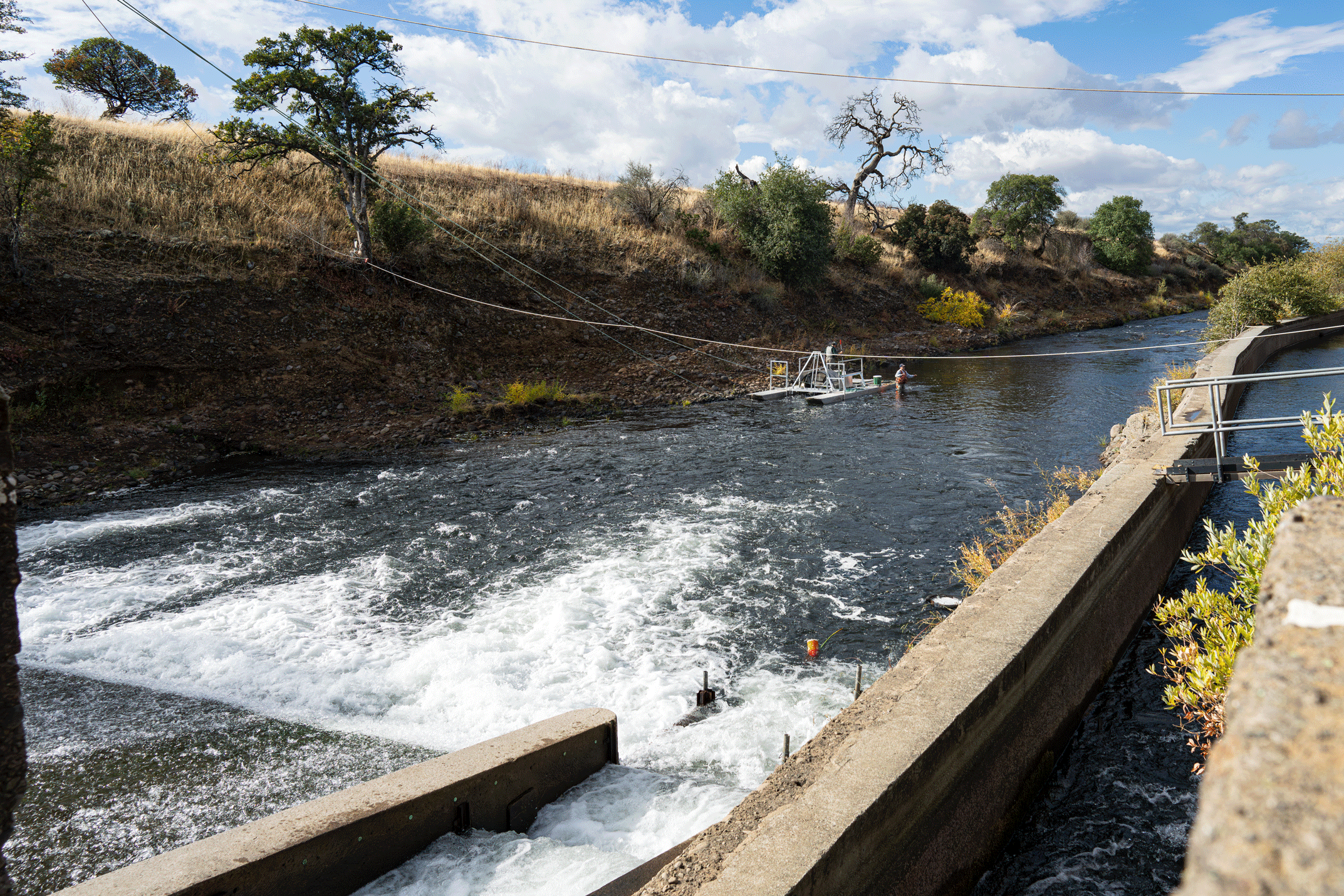
UC Davis Collaborates with State and Federal Agencies to Protect Threatened Native Fish
Center for Aquatic Biology and Aquaculture Houses Juvenile Spring-run Chinook Salmon
A juvenile spring-run Chinook salmon can fit in the palm of a hand. Despite their small size, there is a significant endeavor underway to protect this vital and threatened fish.
For the past several weeks, biologists with the California Department of Fish and Wildlife (CDFW) and the National Oceanic and Atmospheric Administration (NOAA) have been using seine nets to catch the young fish in waterways that Central Valley spring-run Chinook salmon call home. The fish are facing extinction in the wild, so an emergency effort is underway to safeguard the species.
About 500 juveniles that CDFW captured in Deer Creek, a tributary of the Sacramento River in Tehama County, are currently living at the UC Davis Center for Aquatic Biology and Aquaculture (CABA) located on campus. CABA Director and Professor Nann Fangue, who is also chair of the Department of Wildlife, Fish and Conservation Biology, said the goal is to raise the fish to maturity and then relocate them possibly to a conservation hatchery.
“The thought is, for the next few years, we’re not going to have many juveniles born in the wild, so let’s take the ones that are there now and bring them to CABA and then ultimately, we’ll grow them out to reproductive age and then they’ll participate in spawning and rearing of future generations,” Fangue said. “We will be doing this in the background while we see what’s going on in the wild.”

Keeping fish safe
After the fish were captured during the months of October and November, they were transported by truck to campus. Once they arrived at CABA, the fish received an antibiotic treatment to prevent any potential illness outbreak.
The fish are living in a large, cold-water tank. The aquaculture system is designed to provide optimal conditions for the growth and development of the fish. Heather Bell, a staff research associate and Fangue’s co-lab manager, said the water quality, temperature, dissolved oxygen levels and feeding regimes are carefully managed to ensure the health of the fish.
“We feed the fish, clean the tanks and do general observations daily to see that they’re healthy and behaving normally,” Bell said. “By living here, the fish will grow more quickly than in the wild. We feed them nutrient-dense commercial feed and provide them with optimal temperatures and dissolved oxygen to ensure they are thriving while we keep them safe.”
CABA will house the juvenile spring-run Chinook salmon for the next two years.

Severe drought, severe consequences
This fish species is facing population declines due to several factors, including successive droughts and warmer water temperatures. Scientists say the numbers of spring-run Chinook salmon returning to the tributaries in Northern California have been extremely low.
The runs are named for the time of year when adults begin their spawning migration. Chinook salmon have a three-to-four-year life cycle. They are born in the cold headwaters up stream and spend some time in the fresh water before making their trek to the ocean. They grow up there and return to the creeks to spawn and the cycle repeats.
“This year was the first year that the adults that would have been born during severe drought would be coming back, and not a lot came back, fewer than anticipated,” Fangue explained. “They do better when we’ve had wet years because that means there’s lots of water and it’s cold and it opens up more spawning habitat, so we tend to get better juvenile production.”

Tracking for the future
The Fangue lab staff also implanted Passive Integrated Transponder (PIT) tags to each of the fish. PIT tags are tiny, pill-shaped radio transponders that contain a unique code, allowing each fish to be individually identifiable.
Undergraduate students and staff play a key role in the daily care and monitoring of these rescued fish. Having this collaborative project on campus allows students to have an active role in the protection of a threatened species, an opportunity that Bell said is extremely impactful.
“When I was a kid, I always wanted to do work like this, so it’s really exciting to play a crucial part in this project and be able to hold and touch the animals we’re trying to save,” Bell said. “And because we’re a teaching lab, we’re able to show students that we can have an impact on wildlife conservation and management.”
While the tags will help the researchers track the growth of these salmon, other types of tags are used in various other projects at CABA. Fangue said they tag fish that are released into the wild to track their migration to understand how they migrate to the ocean and why so many don’t make it. The data the lab collects can help inform management actions taken in California and beyond.
“We try to do work that is helpful for those making management decisions that lead to conservation outcomes,” Fangue said. “So, I’m really thankful that the state and federal agencies thought to contact us for this project; we’re proud to have these connections.”
Media Resources
- Nann Fangue, Department of Wildlife, Fish and Conservation Biology, nafangue@ucdavis.edu
- Heather Bell, Department of Wildlife, Fish and Conservation Biology, hnbell@ucdavis.edu
- Tiffany Dobbyn, College of Agricultural and Environmental Sciences, tadobbyn@ucdavis.edu